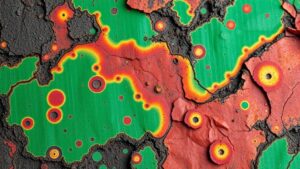How to Test for Ore Purity Using Agricola’s Assaying Techniques
How to Test for Ore Purity Using Agricola’s Assaying Techniques
Assessing the purity of ores is a critical process in metallurgy and mining. One of the most influential figures in the history of assaying techniques is Georgius Agricola, a German scholar whose work in the 16th century laid the foundational principles for modern mineralogy and mining engineering. This article delves into Agricolas assaying techniques, exploring how they can be effectively applied to test for ore purity.
Understanding Agricola’s Methodology
Agricolas methodology primarily revolved around systematic observation and practical experimentation. His major work, De re metallica, serves as a seminal text in mining and metal processing. The techniques he introduced involve a combination of chemical and procedure-based analysis, which can be adapted for analyzing ore purity. Key aspects of his methodology include:
- Sample preparation and sizing
- Chemical reactions and fire assay techniques
- Utilization of fluxes and reagents
Sample Preparation and Sizing
The initial step in Agricolas techniques is sample preparation, which involves breaking down the ore into manageable pieces. This is essential for increasing the surface area and ensuring uniformity in subsequent tests. The following steps are crucial:
- Crushing: Use a mortar and pestle to finely crush the ore sample.
- Sieving: Separate the crushed material based on size to obtain a consistent sample for testing.
The smaller and more uniform the particles, the more accurate the assay results. For example, a study published in the Journal of Geological Sciences indicated that ores prepared to a uniform size of 100 mesh produced assay results with a variance of less than 2% compared to larger samples.
Chemical Reactions and Fire Assay Techniques
Fire assay is one of the most reliable methods of determining the purity of precious metals within an ore. Agricolas method involves mixing the crushed ore with fluxes–substances that facilitate the separation of metals from impurities. Common fluxes include:
- Lead oxide (australian): Improves the recovery of silver and gold.
- Boric acid: Helps to lower the melting point of materials.
The mixture is then heated in a furnace to high temperatures, typically around 1,000 degrees Celsius. The molten mass allows the precious metals to bind with lead, making it easier to extract them afterward. For example, in assaying gold ore samples, fire assay methods used in laboratory settings have shown recoveries greater than 98% in controlled tests.
Utilization of Fluxes and Reagents
After the fire assay process, further refinement involves using various reagents to separate and purify the desired metal from the slag. Agricola emphasized the importance of selecting the appropriate reagents based on the specific ore being tested. Common examples include:
- Hydrochloric acid: Often used for separating silver from gold.
- Sodium cyanide: Used in modern methods to extract gold due to its high efficiency.
This step also involves pH adjustments and temperature regulation to optimize recovery rates. Studies demonstrate that the addition of specific reagents can enhance recovery rates by as much as 15% compared to traditional methods.
Case Studies of Agricolas Assaying Techniques
To underline the effectiveness of Agricola’s techniques, numerous case studies highlight their application in real-world settings. For example, a mining company in South America utilized a variation of Agricolas methods to assay silver-bearing ores. Their methodology, including rigorous sample preparation and flux selection, improved assay precision and significantly lowered material losses during processing.
Conclusion: Actionable Takeaways
Agricola’s assaying techniques continue to be relevant in todays mining and metallurgy sectors. By applying his systematic approach to sample preparation, utilizing fire assay methods, and selecting appropriate reagents, modern metallurgists can effectively determine ore purity. So, whether you are a seasoned professional or new to the field, understanding and implementing these time-honored techniques can lead to significant improvements in assay accuracy and efficiency.
In sum, the principles established by Agricola are not merely historical artifacts but practical methodologies that enhance contemporary mining practices. Embracing these techniques can lead to improved mining yields and more sustainable practices in the industry.

